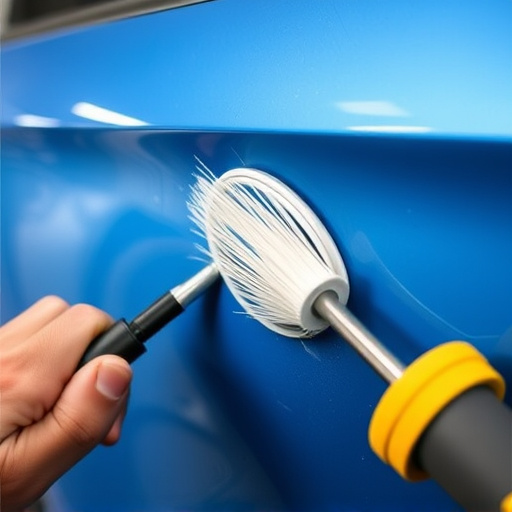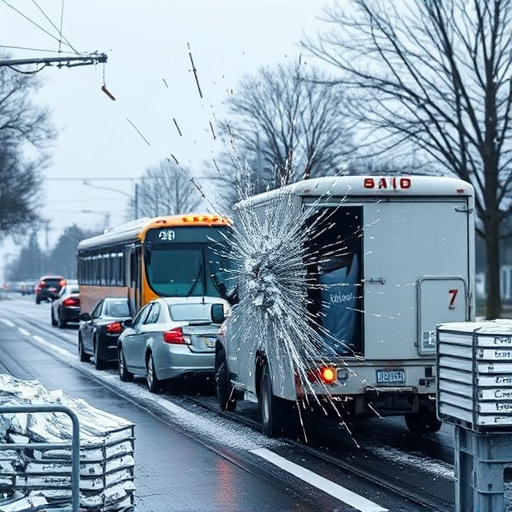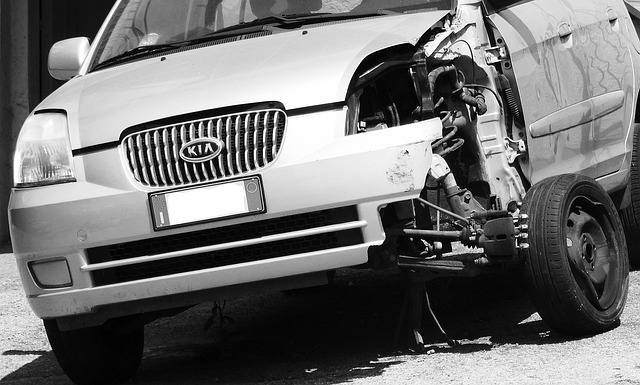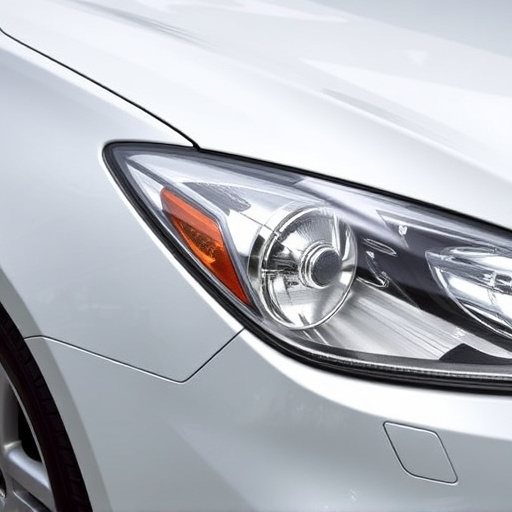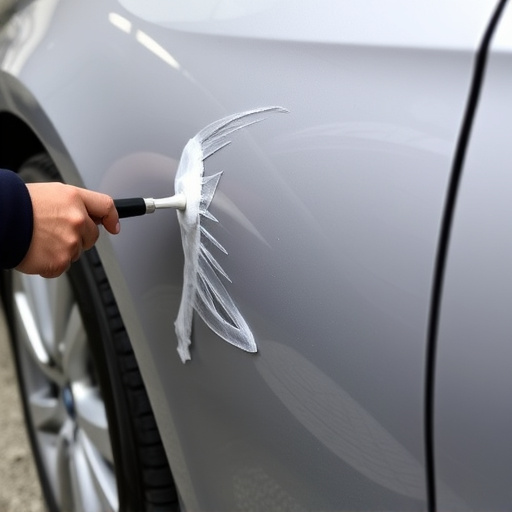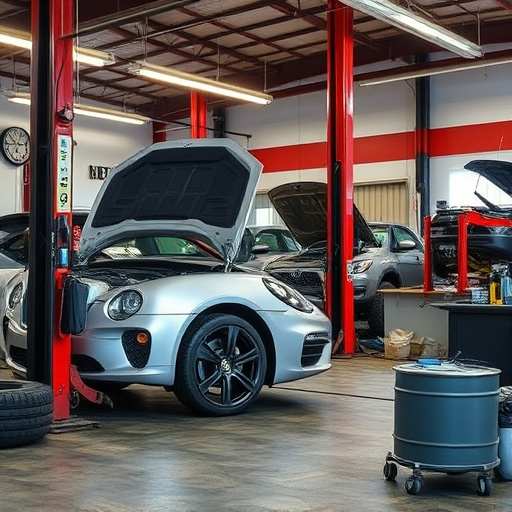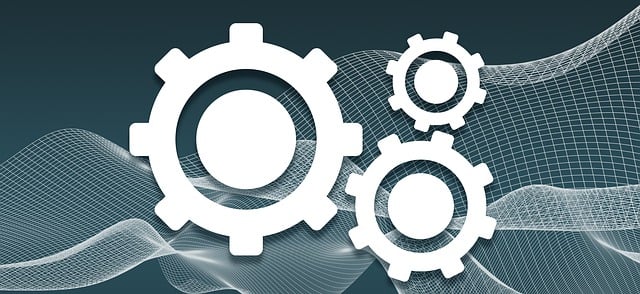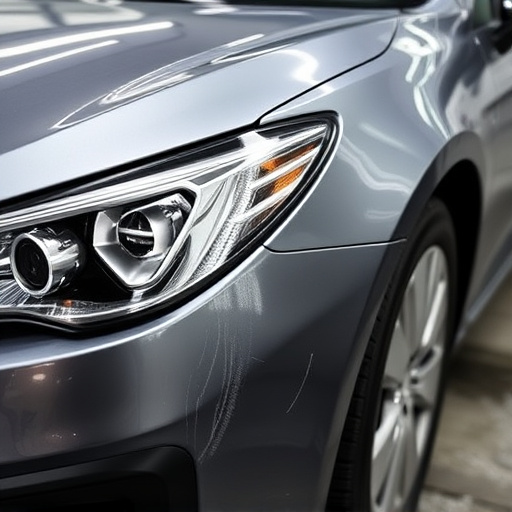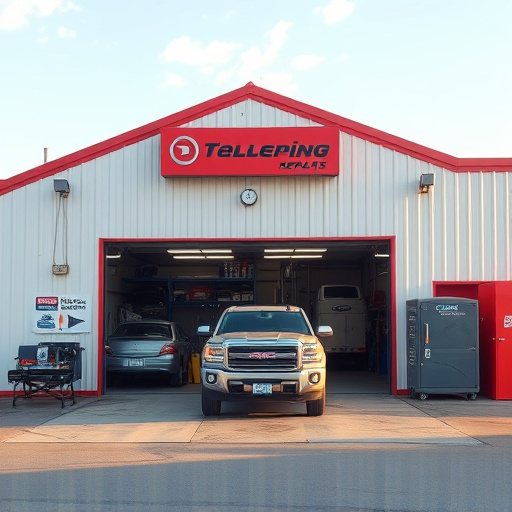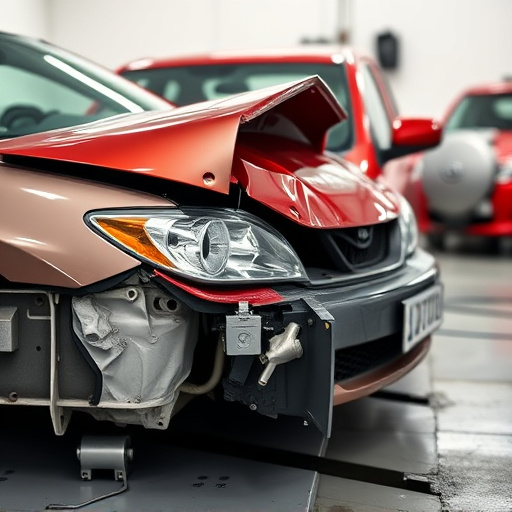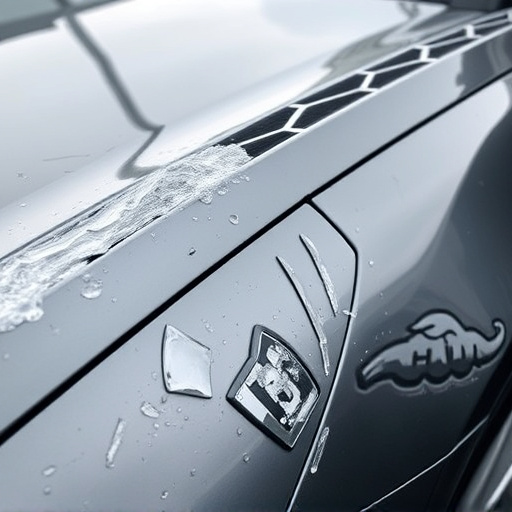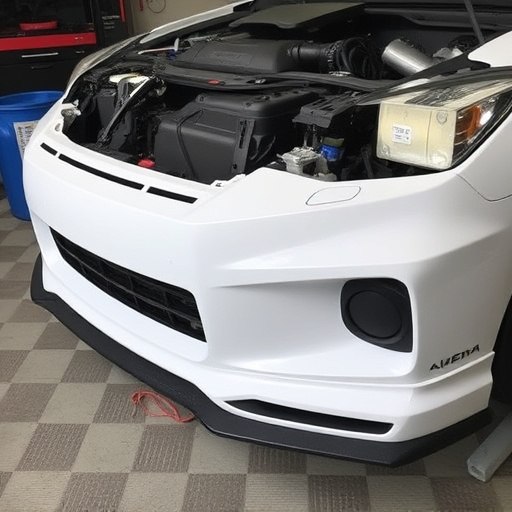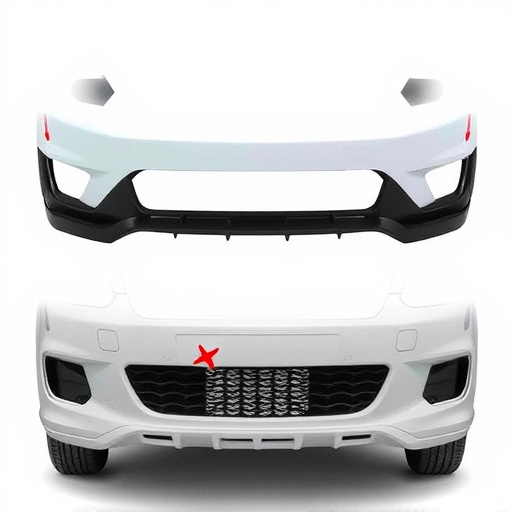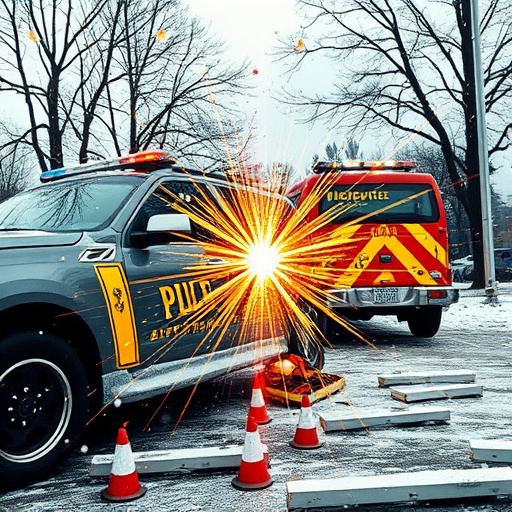Laser frame alignment technology revolutionizes collision repairs with precise 3D scans, enhancing safety and quality by accurately measuring and adjusting vehicle frames. This innovative process improves repair efficiency, reduces damage risk, and maintains structural integrity for superior aesthetic outcomes, but requires proper equipment calibration, technician training, and tailored systems to overcome challenges like complex designs and weather interference.
In today’s automotive industry, precision is key in collision repair. Laser frame alignment technology emerges as a game-changer, offering unparalleled accuracy and efficiency. This article delves into the world of laser frame alignment, exploring its benefits for achieving flawless panel fit and structural integrity. We discuss best practices to ensure successful implementation while addressing common challenges faced by repair shops. Understanding this advanced technique is essential for professionals aiming to stay ahead in the competitive market, emphasizing the role of laser frame alignment as a critical tool for high-quality repairs.
- Understanding Laser Frame Alignment Technology
- Benefits of Using Laser Frame Alignment in Collision Repair
- Best Practices and Common Challenges for Effective Implementation
Understanding Laser Frame Alignment Technology
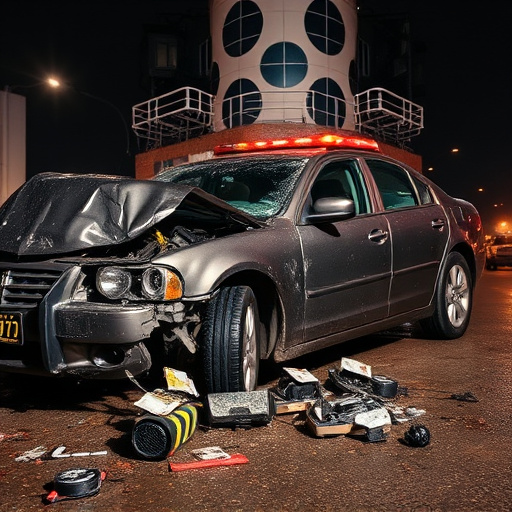
Laser frame alignment technology has emerged as a game-changer in the collision repair industry. This innovative process utilizes precise lasers to scan and measure the vehicle’s frame, ensuring optimal positioning and structural integrity after an accident. By capturing detailed 3D data of the car’s underbody, this technology enables repair technicians to make highly accurate adjustments.
This advanced technique is particularly valuable for correcting fender bends, aligning panels, and restoring the overall structure to its pre-accident condition. Unlike traditional methods that may rely on manual estimation or less precise tools, laser frame alignment guarantees consistent and repeatable results. Moreover, it aids in achieving seamless fit when conducting tire services, dent removal, or car paint repair, ensuring a superior finish and enhancing safety standards.
Benefits of Using Laser Frame Alignment in Collision Repair
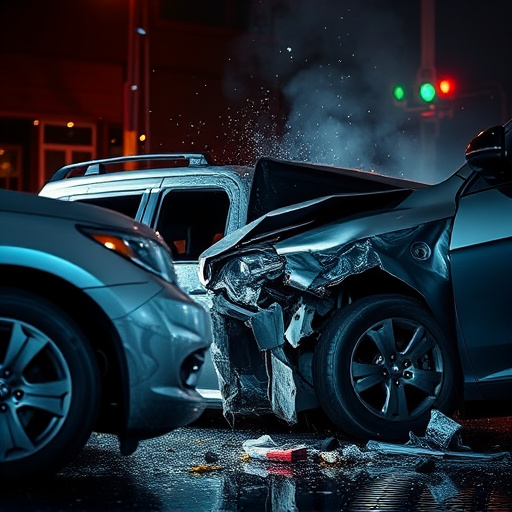
Using laser frame alignment in collision repair offers numerous advantages over traditional methods. It ensures precise and accurate measurements, allowing for better fitting of auto parts like auto glass during repairs. This precision is vital for maintaining the structural integrity and aesthetic appeal of automotive body work, leading to higher quality outcomes.
Laser technology provides a level of sophistication that facilitates more efficient collision repair processes. It can quickly identify and pinpoint issues within the vehicle’s frame, enabling technicians to make informed decisions and carry out repairs with greater speed and accuracy. This not only reduces overall repair time but also minimizes the risk of additional damage during the auto glass repair or other restoration tasks.
Best Practices and Common Challenges for Effective Implementation
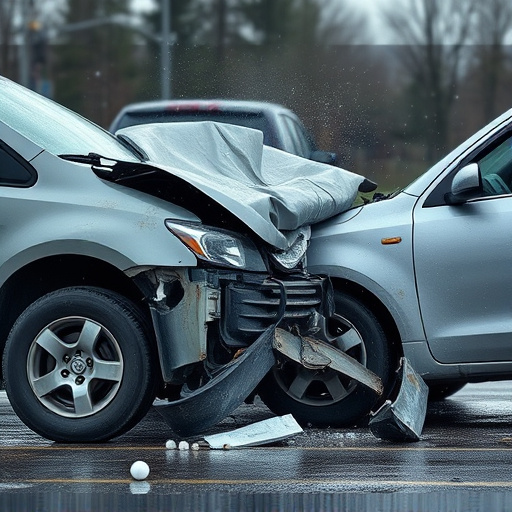
Implementing laser frame alignment in collision repair has become a game-changer, revolutionizing how auto shops handle car body repair and dent removal. However, achieving optimal results isn’t without its challenges. Best practices involve ensuring precise calibration of the laser scanner, using high-quality reference points on the vehicle’s chassis, and training technicians to interpret scans accurately. Regular maintenance checks on equipment and adherence to manufacturer guidelines are also crucial for consistent performance.
Common obstacles include weather conditions that can affect scan accuracy, complex vehicle designs with intricate underbody components, and the need for specialized software and hardware investments. To overcome these challenges, workshops should invest in reliable laser frame alignment systems designed for their specific needs. Additionally, continuous training sessions for staff on new technologies and techniques will ensure they stay adept at handling various car body repair scenarios, from minor hail damage repair to more extensive dent removal processes.
Laser frame alignment is a game-changer in collision repair, offering precise and efficient measurements that streamline the restoration process. By leveraging this technology, professionals can achieve superior results, reduce labor times, and enhance overall vehicle integrity. However, effective implementation requires adhering to best practices and addressing common challenges, such as ensuring proper training and utilizing advanced tools for accurate readings. Embracing laser frame alignment as a standard practice in the industry promises to elevate the quality and consistency of collision repair work.
